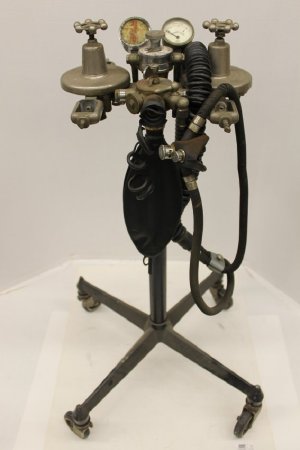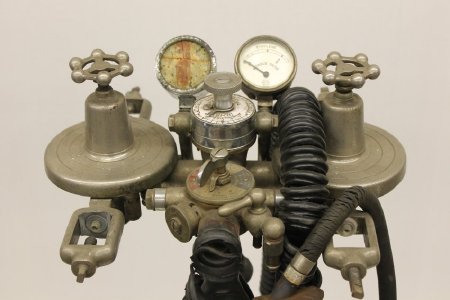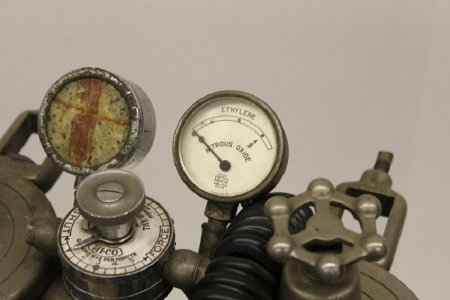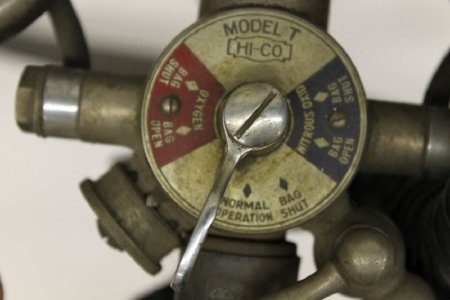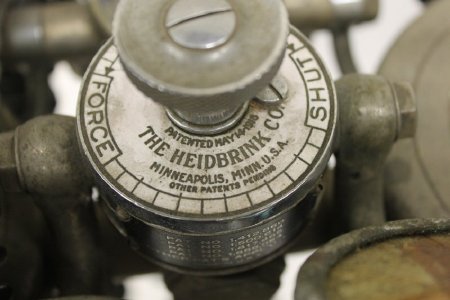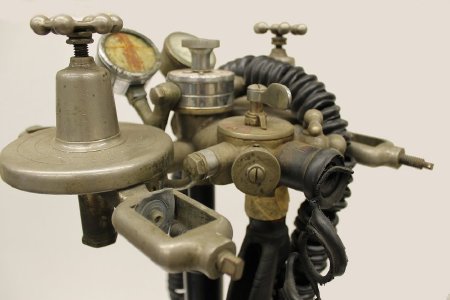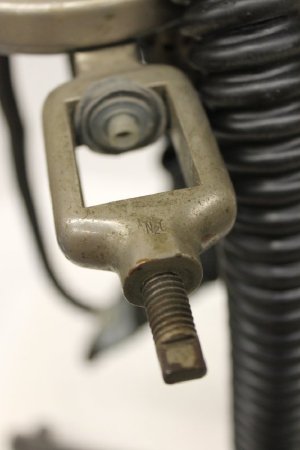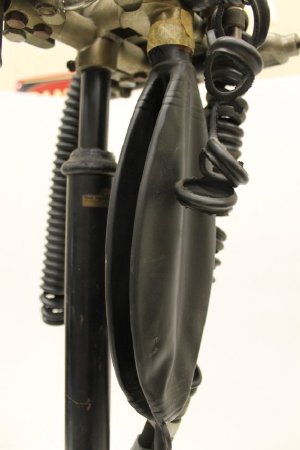Object ID Number:
EH101184
Object Name:
Anesthesia Machine
Date of Manufacture:
– 19th to 20th Century
Manufactured from:
1932
Manufactured to:
1940
Description / History:
Free standing Heidbrink anesthesia machine. The machine used oxygen, nitrous oxide and ethylene to supply an anesthetic to the patient in surgery. The combination of ethylene and oxygen as an anesthetic was discovered in the early 1900's and was highly praised as being a great alternative to ether. Although still highly explosive, ethylene was noted to take only around three to eight minutes to induce anesthesia and did not commonly cause the intense nausia and gas pains as ether did. Other advantages noted were the lack of patient sweating during the surgery, the little change in blood pressure, absense of respiratory irritation and relaxation without cyanosis (a bluish discoloration of the skin).
Jay Albion Heidbrink, the designer of this machine, was one of the first to incorporate a reducing valve into his machines in 1911, after observing that the opening from high–pressure cylinders often froze closed as gases were released. The valve reduced the high tank pressures to a normal, workable pressure.
This machine itself contains slots for containers of N2O and O2 with nobs to open and close the bags. Two meters are located on top to measure the amount of N2O, O2 and ethylene. A rubber inhaler is attached to the final piece of the machine. The patient would breath in the final mixture of gas and breath out CO2 through the small holes in the mask.
The machine's specific design was first patented on April 18th, 1922 and at the time of this machine's make was last patented on May 10th, 1932, although more patents were pending.
Jay Albion Heidbrink, the designer of this machine, was one of the first to incorporate a reducing valve into his machines in 1911, after observing that the opening from high–pressure cylinders often froze closed as gases were released. The valve reduced the high tank pressures to a normal, workable pressure.
This machine itself contains slots for containers of N2O and O2 with nobs to open and close the bags. Two meters are located on top to measure the amount of N2O, O2 and ethylene. A rubber inhaler is attached to the final piece of the machine. The patient would breath in the final mixture of gas and breath out CO2 through the small holes in the mask.
The machine's specific design was first patented on April 18th, 1922 and at the time of this machine's make was last patented on May 10th, 1932, although more patents were pending.
Dimensions:
H–36 W–25 D–12 inches
